When it comes to mulching, are there any differences between bark vs wood chips?
The answer is yes! And that’s a good thing because both have their own advantages when used as mulch.
This article will compare the differences between bark and wood chips. We will also look at how each type of material is used and why you should care.
We will also look at different types of mulch and how they can improve the soil quality.
Bark vs Wood Chips: What are the Differences?
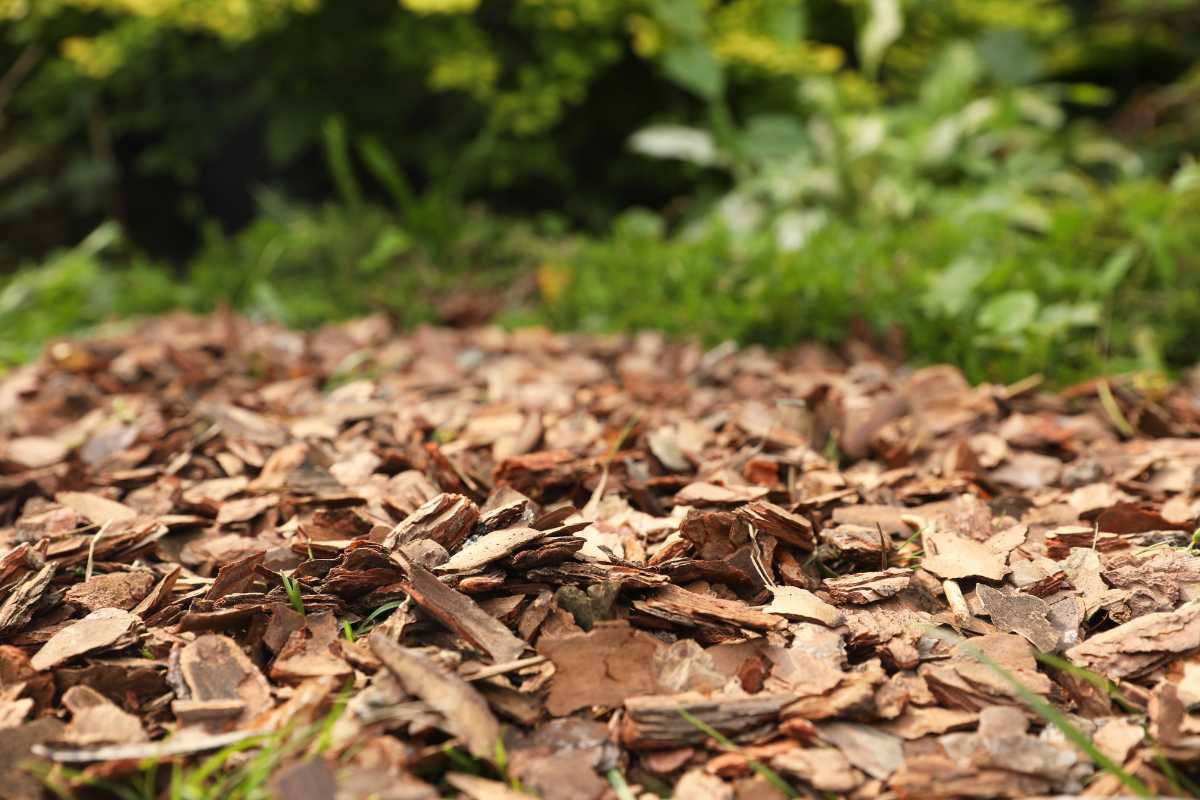
You can probably already guess that the main difference between bark and wood chips is that one is made of the chipped bark of a tree, and the other is made of wood.
However, both of these organic materials are interchangeable when used in the garden, with a few notable differences.
While both can be used effectively as mulch and have the same benefits, bark will rot down much faster than wood chips. So bark will have to be replaced more frequently than wood chips.
For animal enclosures, wood chips are advised as a fungus that causes respiratory problems in animals like chickens can grow on bark.
How Bark vs Wood Chips are Made
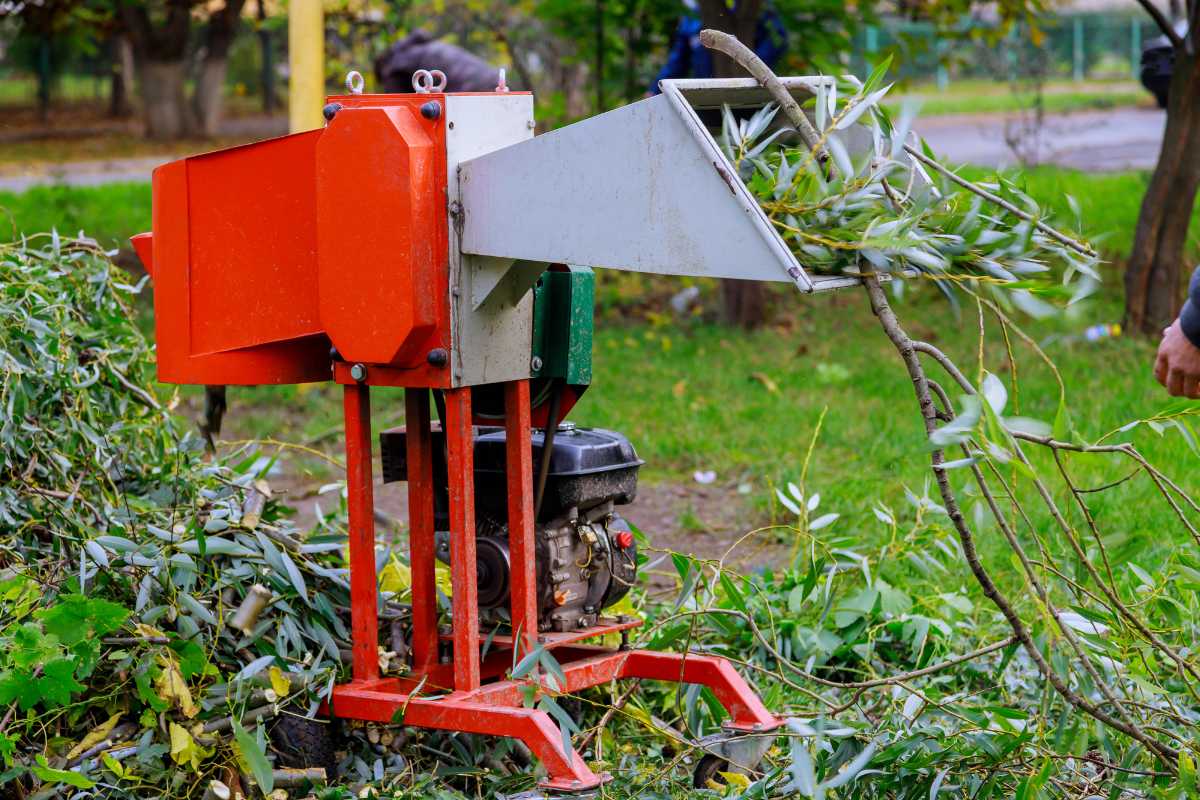
Bark chippings are often a by-product of the timber industry and come in various grades depending on the usage. Shredded bark of low quality is usually best for mulching, as higher grades can be more expensive.
Choose a larger bark chip for paths or play areas. Play grade bark chips are available with rounded edges and are suitable for areas where children play.
Different colors of bark chippings come from different trees. For dark brown, go for spruce bark. Pine had a lighter brown color, and deep reds come from red cedar or red pine trees.
Wood chips are made by chipping wood. It often comes from fallen trees, but really can be made of any wood, including recycled wood products.
In fact, small wood chippers are commercially available, so you can make wood chips at home using any available wood, including garden waste. Wood chips can be made of hard or softwood, but even the cheaper softwood varieties last longer than bark chips.
Texture and Composition Differences
Bark is lightweight and has a rough texture, making it easy to transport and less likely to move from its designated area. These properties make it very useful in sloping areas where wood chips might slip.
Tree bark is lightweight, so it’s easier to move, but it’s also a disadvantage. During heavy rains or flooding, there is the risk that the bark will float away.
Wood chips are much softer but denser. They won’t rot down as quickly as bark. Wood chips will last a good couple of years before needing to be replaced.
Wood chips will retain more moisture and let water filter more freely into the soil below. That’s good for soil moisture and prevents water loss.
When to Use Bark Mulch
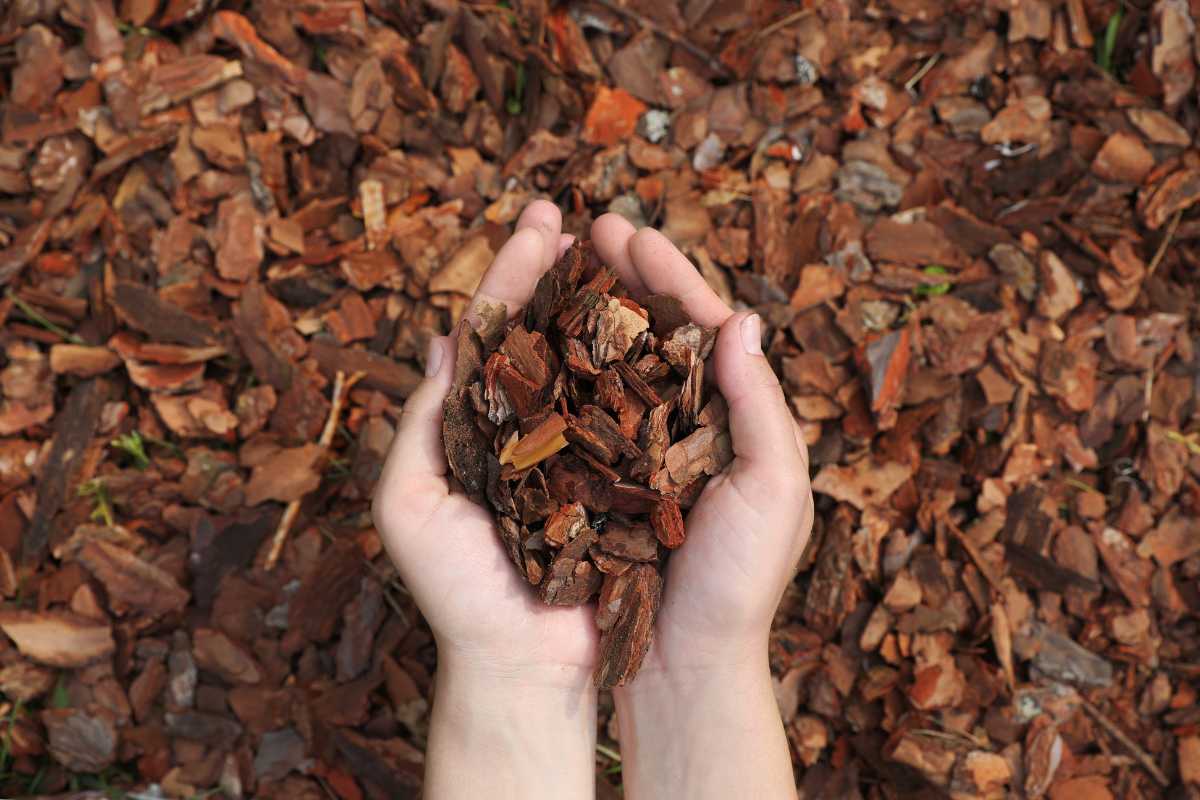
Like most mulches, bark will keep the soil moist and cool in the summer, warmer in the winter, and helps to suppress weed growth. Bark can be used anywhere, but the type of bark you choose will depend on how you want to use it.
The standard type of bark chips are small to medium in size. They are large enough not to blow away, and it is difficult for pets to dig through them. Micro-sized bark chips are attractive but may spread easily by gusts in a windy area.
Shredded bark is especially useful on sloping or hilly places due to its rough texture, meaning that it will stay in place regardless of the terrain.
As bark doesn’t really mix well with soil, it’s best not to use them in your vegetable patch as they will be a hassle to remove. Use bark chips on borders and around shrubs where it can stay until you need to top it up.
Mulches are always best applied in the early spring once the soil has warmed but hasn’t dried out, and in autumn before the earth gets too cold.
When to Use Wood Chips for Mulch
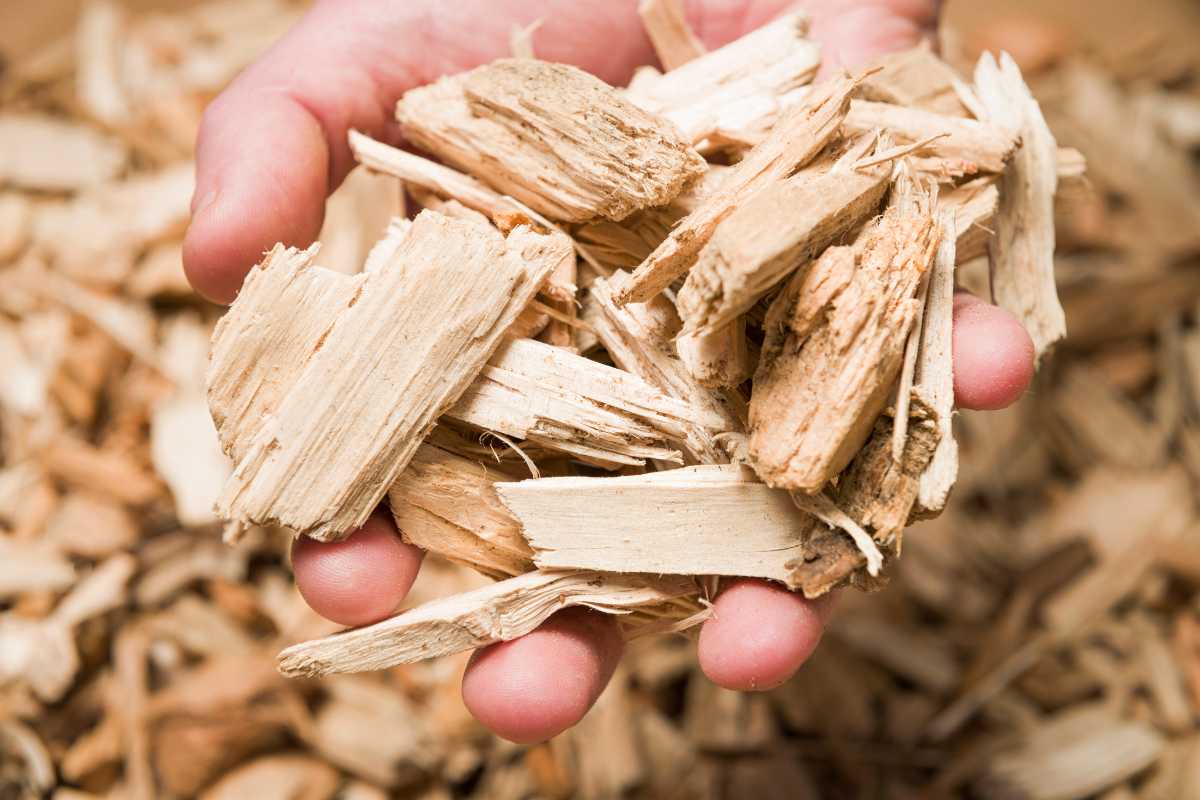
Like bark, wood chip mulch are not really suitable for your vegetable patch. This unsuitability is because they won’t break down quickly, and when they do start to rot, the microorganisms involved in the decomposition process may leach nitrogen from the soil to help them break down the carbon-rich wood.
Annual plants, such as vegetable plants, need far more nitrogen than perennials. For this reason, wood chips are better used in borders and around shrubs where they can stay in place and won’t pose a threat to your plants.
Different woods have different qualities. For example, walnut wood contains the biochemical juglone that can stunt the growth of nearby plants, and conifer wood can make the soil more acidic. It is important that you research the type of wood chip you are using before putting it on your garden.
When buying wood chips, try to stick to untreated varieties as these are much better for animals and plants. The chemicals found in treated wood chips could harm your garden. After rain or watering, those harmful chemicals can leak into the soil.
Wood chips can also be used in chicken runs, as a wildlife habitat, bug hotels, or as ground cover. Large chips work well in pathways and protect the ground in hard-wearing areas such as play or seating areas.
Large chips are best for longevity, but you can choose greenwood if you want it to decompose quicker. You may be able to use green wood on vegetable plots, as it will have some nitrogen content (especially if you add fresh leaves as well).
Why Use Mulch?
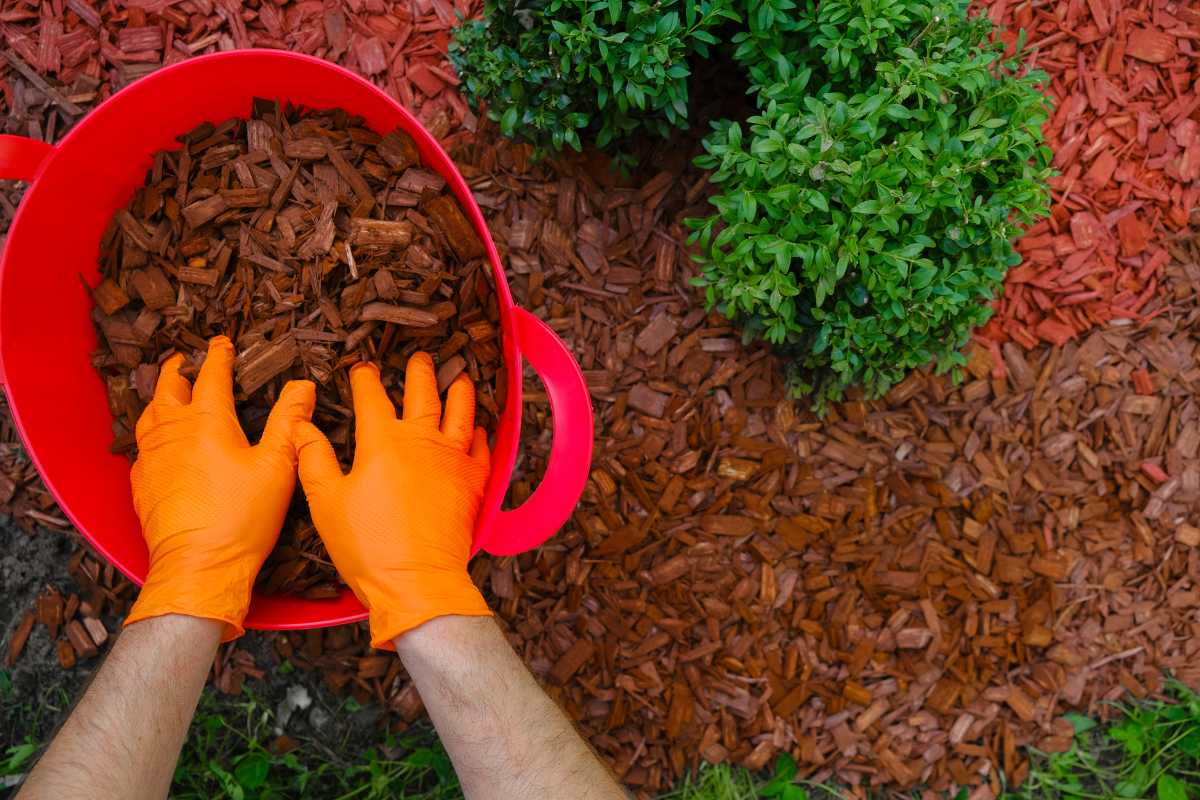
Mulch has many benefits, including weed suppression, moisture retention, heat retention, and aesthetic qualities. Gardeners often use different varieties of mulch in different areas of the garden.
Mulch can be used in various ways, depending on the material, but it is most commonly used to beautify areas of your garden that are prone to weeds.
Bark and wood mulch is often used to neaten up gardens and make them look more attractive.
You can use mulch to retain water in dry areas, which means less evaporation and therefore less water loss.
Mulch helps keep the soil cool by insulating against hot sun rays. If you live in an area with extreme weather conditions, then you should consider adding straw or hay mulch to your garden beds.
Other Common Mulch Materials
There are a variety of other inorganic and organic materials that can be used as mulch options.
1. Shredded Bark or Wood
Shredded wood and bark can often look very attractive. However, it is difficult to work with and can be prone to splinters. It is great for slopes as it tends to stay in place.
However, shredded wood mulch can blow away easily, so it should be avoided in windy areas.
2. Compost
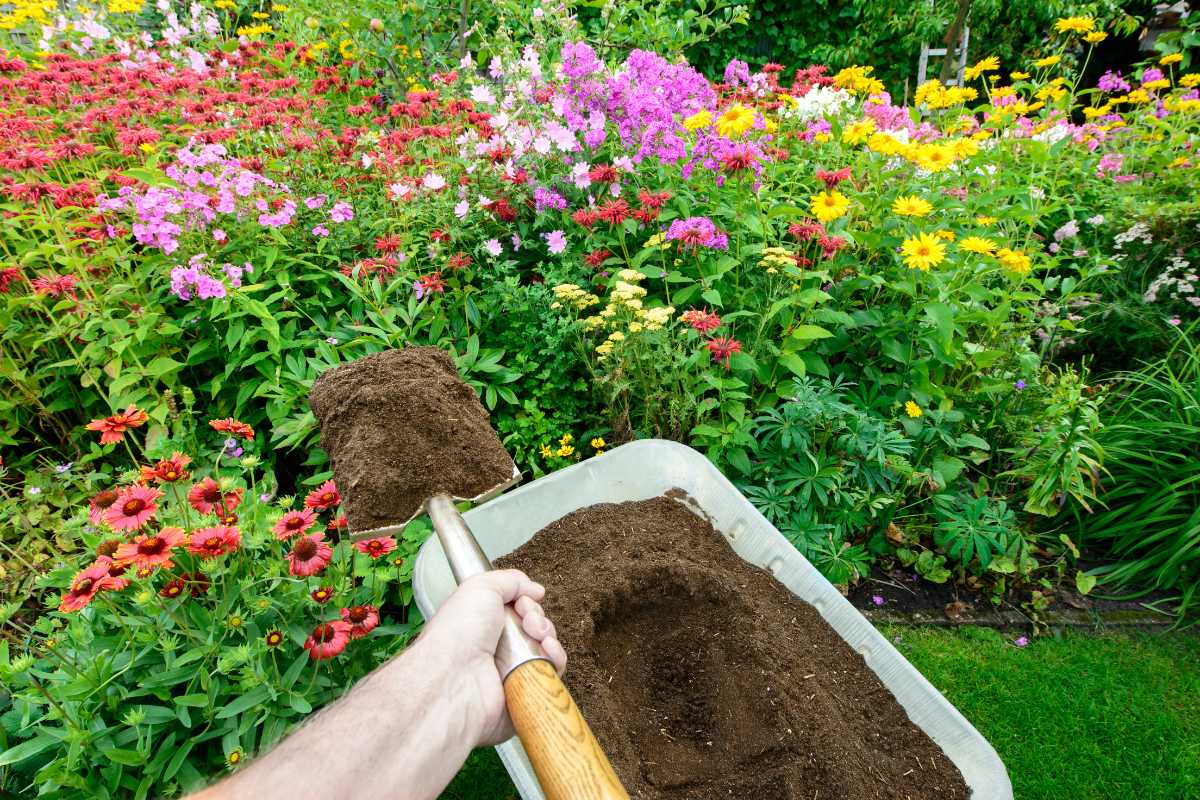
Compost is the most beneficial as it’s made out of pure organic material, but it’s also the least attractive mulch. As it contains nutrients, it can feed your plants alongside all of the other functions of mulch. Compost mulch is perfect for vegetable gardens, as it will improve the quality of the soil, but it can be used anywhere.
- Related article: Compost vs Mulch – What’s the Difference?
3. Pine Needles
Pine needle mulch from pine trees create acidic soil, so they are great for acid-loving plants like blueberries, rhododendrons, and hydrangeas.
However, they should be avoided for other plants like lavender and honeysuckle.
4. Rubber
Rubber mulch acts in much the same way as other mulches, and it can break down over time. It comes in various colors and can look attractive when used on borders.
The disadvantages of this type of mulch are that it is more flammable than wood, can be very expensive, and may be toxic to some plants and animals
5. Stones
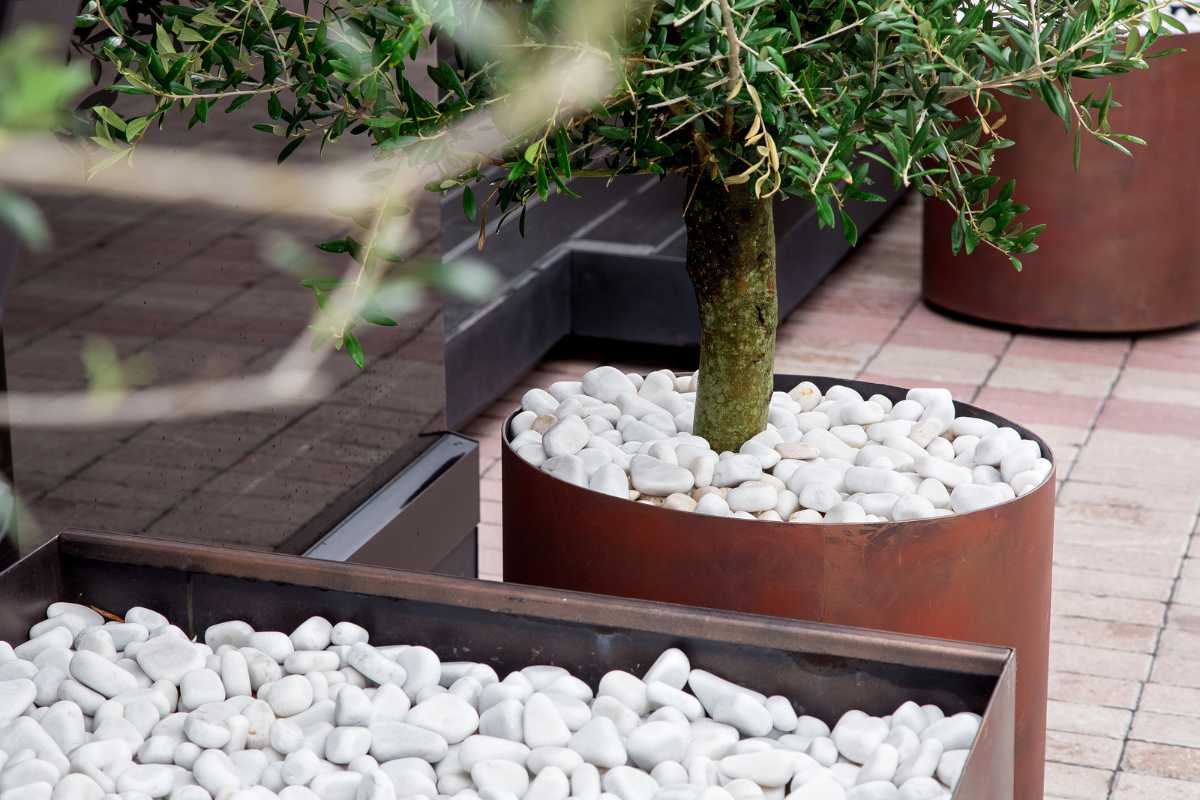
Stone mulch is often used for aesthetics. Stone mulch is very low maintenance, as it won’t break down and need to be replaced, which also makes them generally low cost.
However, stone can make the soil more alkaline and raise the soil temperature.
Bark vs Wood Chips vs Mulch Final Thoughts
Mulch is a wonderful addition to any garden. It can help protect your plants from harsh elements such as cold temperatures, rain, and drought. It can also help reduce soil erosion and conserve water. In fact, mulch can even help increase plant growth
Bark vs Wood Chips vs Mulch FAQs
Are mulch and bark the same thing?
Mulch is a layer of organic matter placed over top of the ground to protect roots from drying out. Bark is the outer covering of trees and shrubs. Mulch is usually made up of wood chips, straw, grass clippings, sawdust, shredded paper, or other similar materials. Bark is usually made up of tree trimmings, twigs, or branches. Both mulch and bark help keep weeds under control and prevent erosion.
What’s the difference between bark and bark mulch?
Bark mulch is made from tree trimmings, branches, sawdust, and other wood products. Bark mulch is used to protect the roots of trees and shrubs during the summer and winter months. It is usually applied around the base of the trunk and along the sides of the tree. Bark mulch is typically dark brown or black in color. Bark itself is usually considered the outer covering still on the tree or shrub.
What lasts longer bark or mulch?
Mulch lasts longer than bark because it doesn’t decompose as fast. Mulch can be made from wood chips, straw, sawdust, shredded paper, grass clippings, pine needles, and other organic matter. Bark is usually made from cedar, redwood, maple, oak, ash, and hickory trees. Both mulch and bark are used to protect plants from weeds, pests, and diseases.
Which type of mulch is best?
The best type of mulch is one that fits your needs. If you have an area where you want to grow vegetables, then using a mulch that contains compost will help retain moisture while providing essential nutrients to the soil and plants. Shredded bark is also a great type of mulch because it can be used on slopes and areas with poor drainage. The disadvantage of using bark is that it’s lightweight, so don’t use it if your area floods or has a lot of rain.

